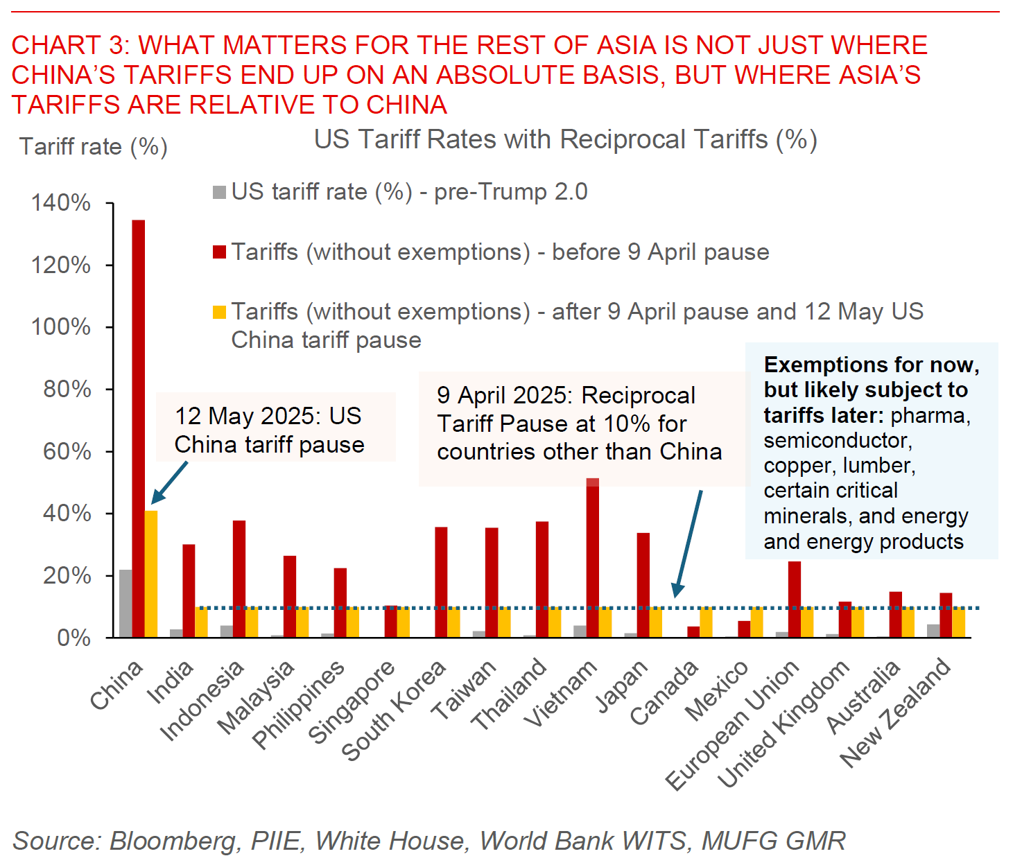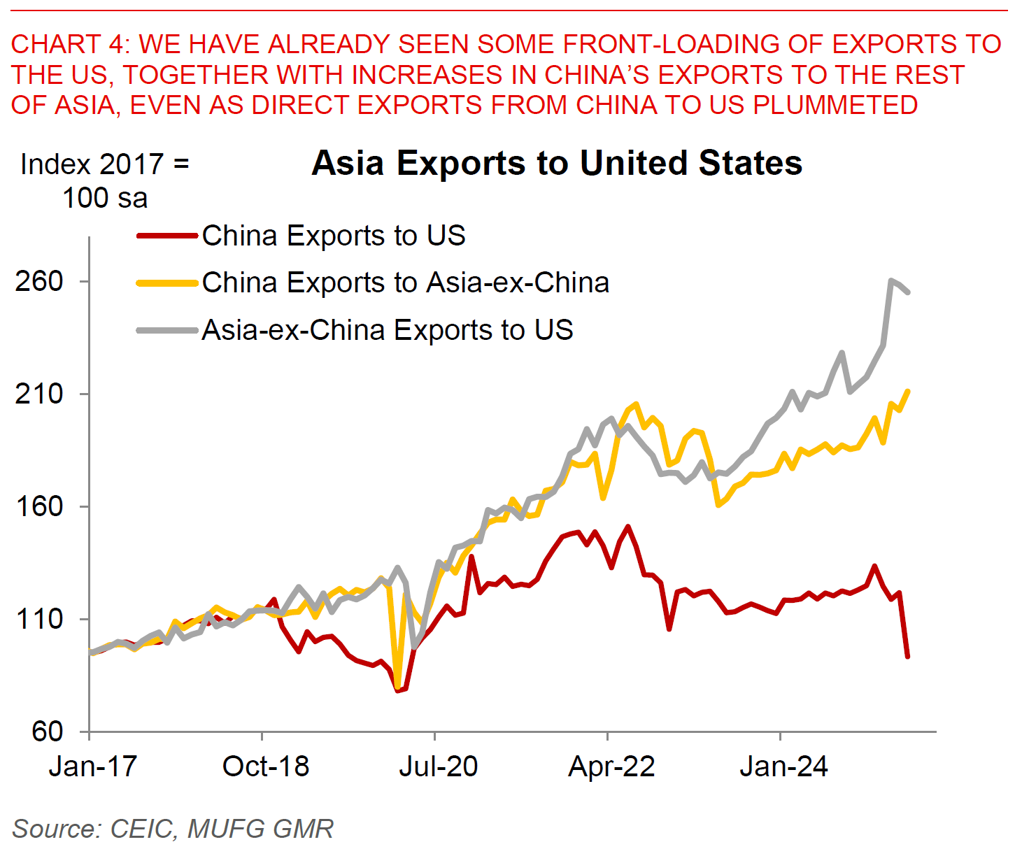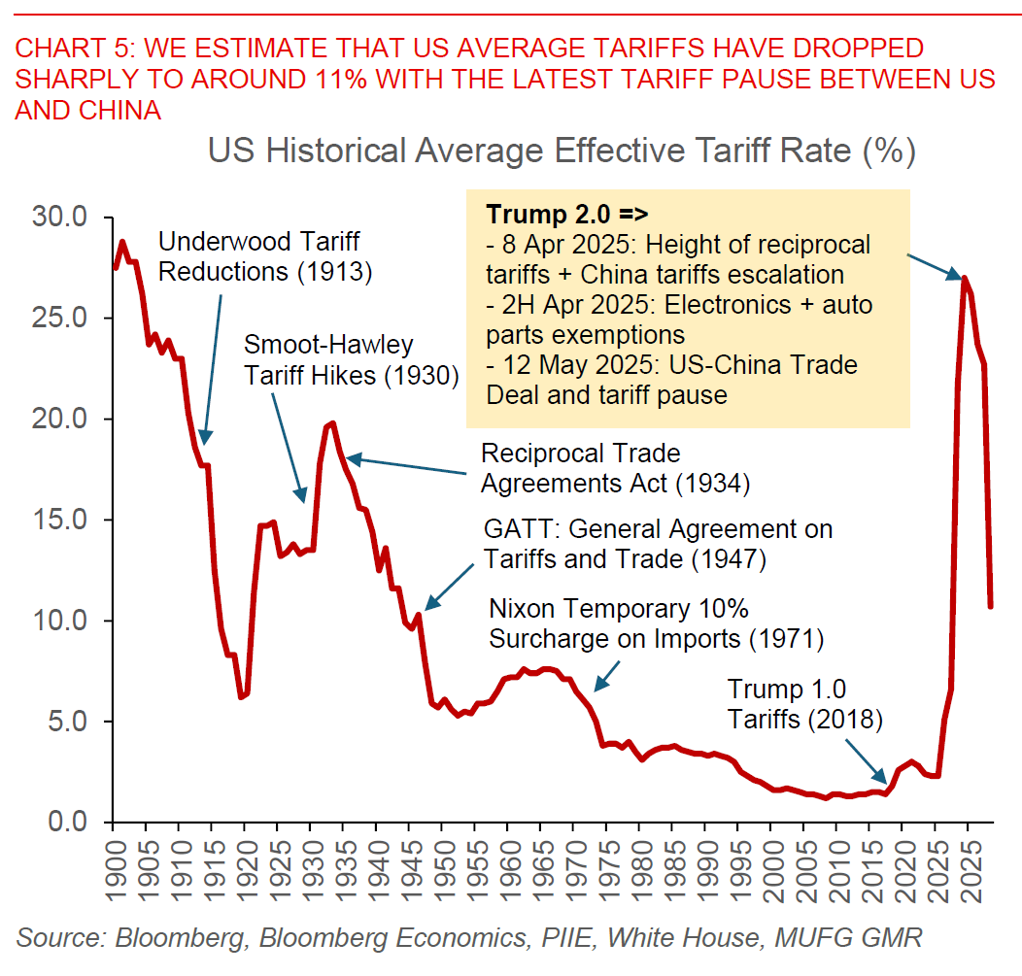Ahead Today
G3: US CPI
Asia: India CPI
Market Highlights
The key market-moving development was the significant tariff pause between China and the US announced on 12 May 2025, with the magnitude of the cuts far larger than what the market was anticipating (see US-China trade war – some easing of tensions). In particular, the US will cut the 145% tariffs imposed since Trump 2.0 to 30%, China will reduce its 125% tariffs on US goods to 10%, while China will also suspend or remove the non-tariff countermeasures taken against the US since 2 April. While the path forward would certainly depend on negotiations, the good news is two-fold. First, the tone out of the meetings was constructive with official channels of communication set up. This is of course not to say that disagreements will not happen, but at least dialogue seems more likely moving forward. Second, US Treasury Secretary Scott Bessent implied that a 10% rate was a “floor”, and the 2 April announced rate of 54% was likely a “ceiling”, in a way capping left tail risks if these pronouncements hold.
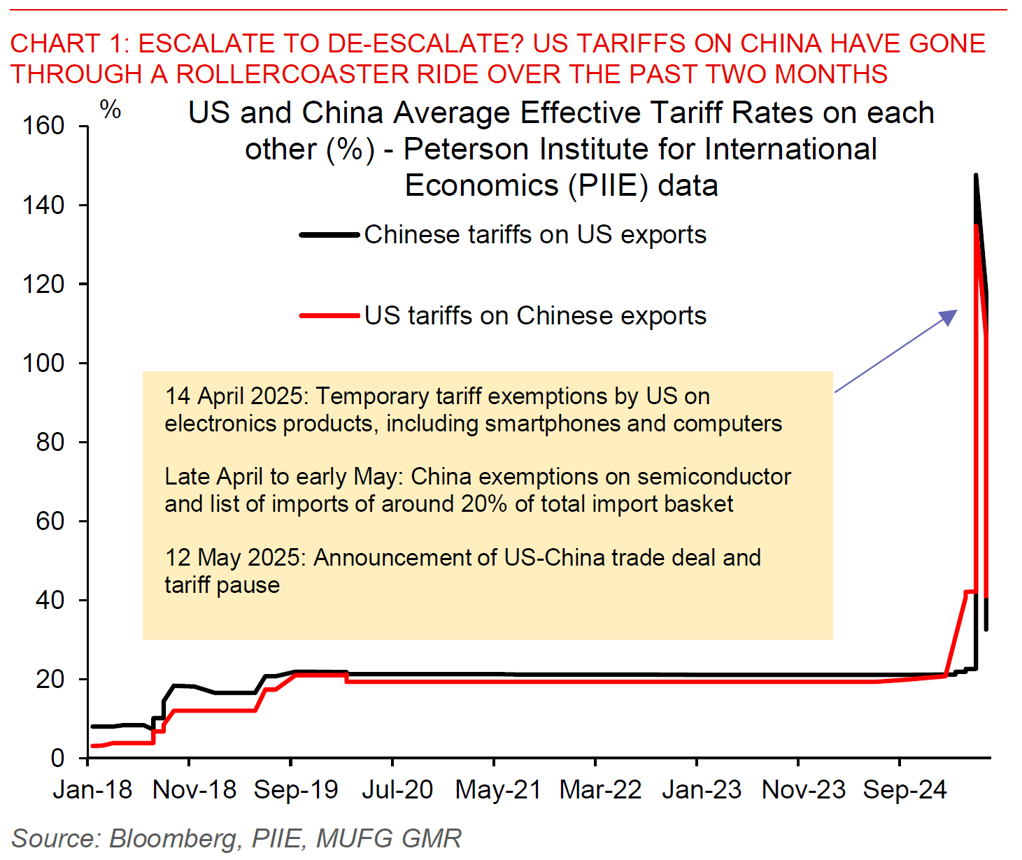
Risk assets surged with the S&P500 and MSCI China rising more than 3%, safe-havens such as gold fell sharply to US$3200 levels, while US 10-year yields rose by 10bps to 4.47% as markets priced for stronger growth both in the US and China.
The really fascinating market moves came in the FX markets, with the Dollar strengthening by more than 1%, led by weakness in EUR and JPY. Within Asia-ex-Japan FX, CNY/CNH strengthened by 0.6% outperforming the region, with weakness seen across Asian FX pairs such as KRW (-1.4%), THB (-1.4%), IDR (-0.8%), MYR (-0.7%), TWD (-0.6%) and SGD (-0.6%).
All these FX moves are not historically what one would expect during a risk-on move, these are to an extent a short-term reversal of the Liberation Day tariff-related US Dollar weakness, with previous outperformance in EUR/JPY and underperformance in CNY partially retracing, while USD/Asia was impacted by its beta to the stronger Dollar.
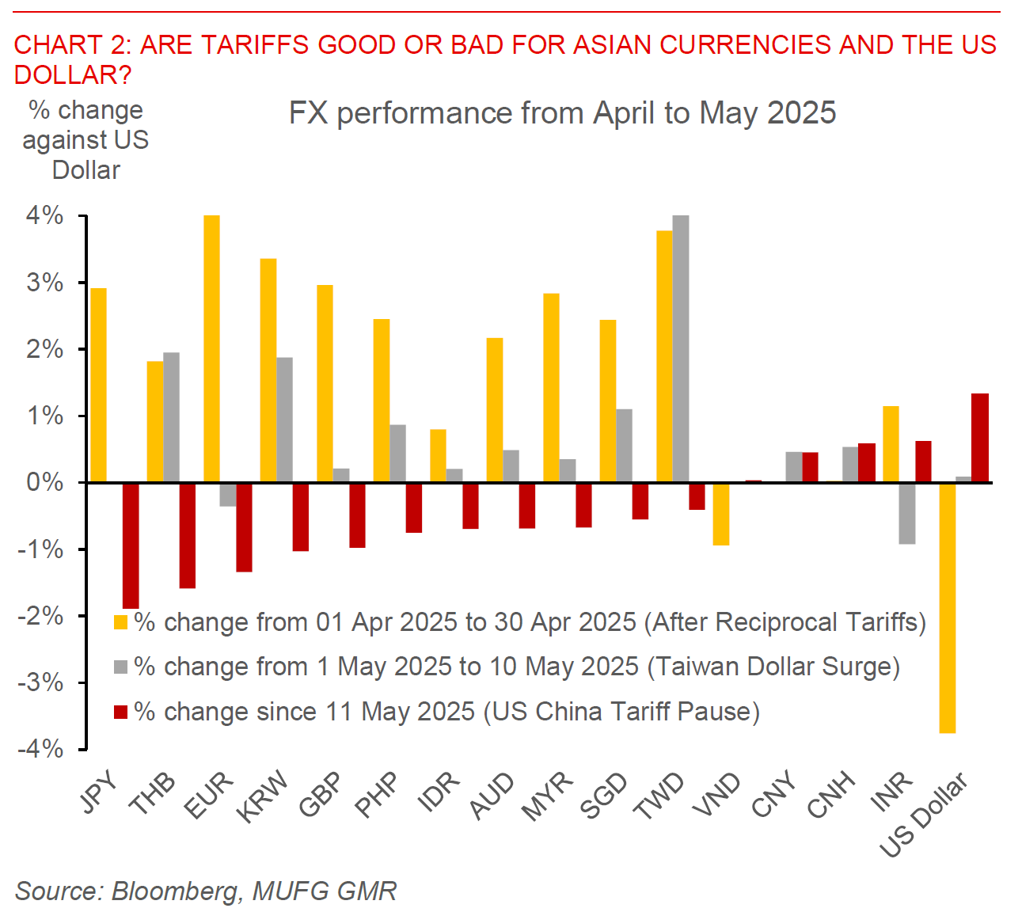
Regional FX
The key question is also what all this means for Asia currencies and economies moving forward. We highlight at least 3 major implications:
First, we think it makes sense for Chinese exporters to front-load their exports to the US within this 90-day period. We have already seen some of this trends in Asia-ex-China, with the likes of Vietnam, Taiwan, Malaysia and Thailand increasing exports to the US, while China raising its exports to the ASEAN even as China’s exports to the US has plummeted in April.
Second, the key for the dispersion of Asia FX performance is not just where US tariffs on China end up on an absolute basis, but also where they stand relative to China. This is perhaps most relevant for the likes of India, Malaysia, Vietnam and Thailand which are most likely to be able to substitute China’s exports, and where there are moves to try to strike a trade deal with the US most notably for India and Vietnam.
Third, the million-dollar question is also what happens to Asian currencies against the Dollar moving forward, and in particular which factor dominates – 1) continued questions over US exceptionalism, 2) capital inflows into US equities which boosts the Dollar and hence USD/Asia, or 3) the net impact on global and regional Asia growth of these tariff changes. While our eyes are all transfixed on US-China trade deal at the moment, we should also not forget the upcoming US tax bill which are in discussions now which might shift market’s focus on US fiscal sustainability and hence also impact the US Dollar/USDAsia more broadly.
